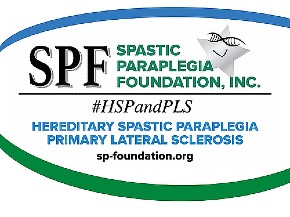A decade ago, Dr. Peter Baas studied the normal functions of spastin in the nervous system, as part of his ongoing work on the regulation of the microtubule cytoskeleton of neurons. Liang (Oscar) Qiang came to his laboratory at Drexel University as a PhD student, and took on the project for his dissertation work. Meanwhile, Dr. Baas began partnering with an expert in neurodegeneration, Dr. Gerardo Morfini, from University of Illinois, who independently studied whether mutant forms of spastin associated with Hereditary Spastic Paraplegia (SPG4-HSP variant) affect axonal transport, a cellular process critical for neuronal function and survival. Based on their findings, they teamed up to understand, at the molecular level, how mutations in the SPAST gene give rise to SPG4-HSP.
With funding to Dr. Baas from the National Science Foundation (for the basic science work) and to Dr. Morfini from the National Institutes of Health (for axonal transport studies in HSP), the work got off to a strong start. However, the disease being rare, and with vertebrate models lacking, funding then became scarce for the next decade. Small grants from the Spastic Paraplegia Foundation, the Tom Wahlig Foundation and Drexel University allowed Dr. Baas to continue the work, which was buoyed by the return of Dr. Qiang to Drexel University after his postdoctoral training at Columbia University. Dr. Baas developed the first mouse model that expressed human mutant spastin and Dr. Qiang brought hiPSC (human induced pluripotent stem cell) technology to the project. While still struggling with minimal funds for the project, the team published several papers over the years, mainly focusing on novel mechanistic insights.
This past year, in 2020, with so much bad news around the world due to the pandemic, some very good news came to the project, with repeated efforts to obtain significant funding for the SPG4-HSP project finally coming to fruition. Drs. Baas and Morfini successfully secured a major multi-Investigator R01 grant from the National Institutes of Health, while at the same time, Dr. Qiang successfully secured his own R01 grant. This is the equivalent of three five-year R01 grants, all running concurrently to study SPG4-HSP. Efforts are now underway to hire new people for each lab and to establish robust collaborative experiments that are even more adventurous than could be accomplished with just one grant. The team is dedicated to the research, and also keeping in close contact with the Spastic Paraplegia Foundation in the USA as well as its international counterparts in Australia, Germany and elsewhere.
The Baas/Morfini multi-PI grant involves the generation of new mouse models in which the afflicted corticospinal tracts are made fluorescent so that they can be visualized for rapid study. The work builds on mechanistic hypotheses for how the loss of normal spastin function as well as the toxicity of the mutant spastin protein each negatively impacts corticospinal motor neurons – but in different ways. This grant also involves studies on autophagy and a particular kinase (CK2) that appears to go awry in the disease. The Qiang grant involves crossing the mouse that expresses human mutant spastin with a spastin knockout mouse model to directly test the idea that both mechanisms contribute to the disease. Dr. Qiang’s grant also involves hiPSC cells and mechanistic hypotheses dealing with posttranslational modifications of tubulin and microtubule mobility. While the grants are entirely different in their specific experiments, they mesh well in terms of covering critical aspects of SPG4-HSP pathogenesis.
With unprecedented funding for a disease that has languished for too long with insufficient funding, Drs. Baas, Mor-fini and Qiang are determined to fulfill the promise of the funding and to carry the work forward, beyond the next five years. Their greatest satisfaction comes from the impact the work will make on patients, and they are always eager to communicate with people who have SPG4-HSP, to learn their stories and to help build a better and more hopeful future for those who have been impacted by this disease.













